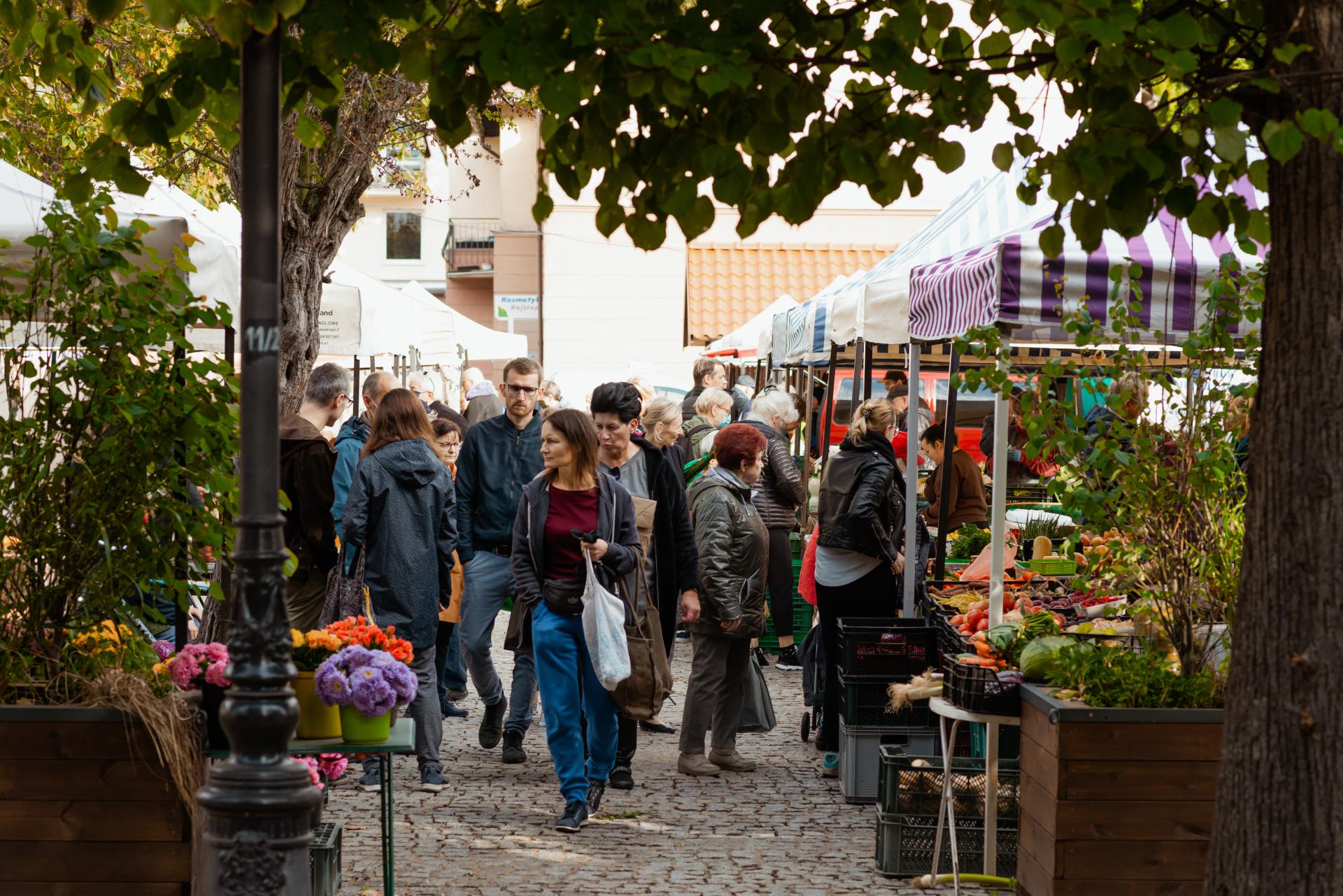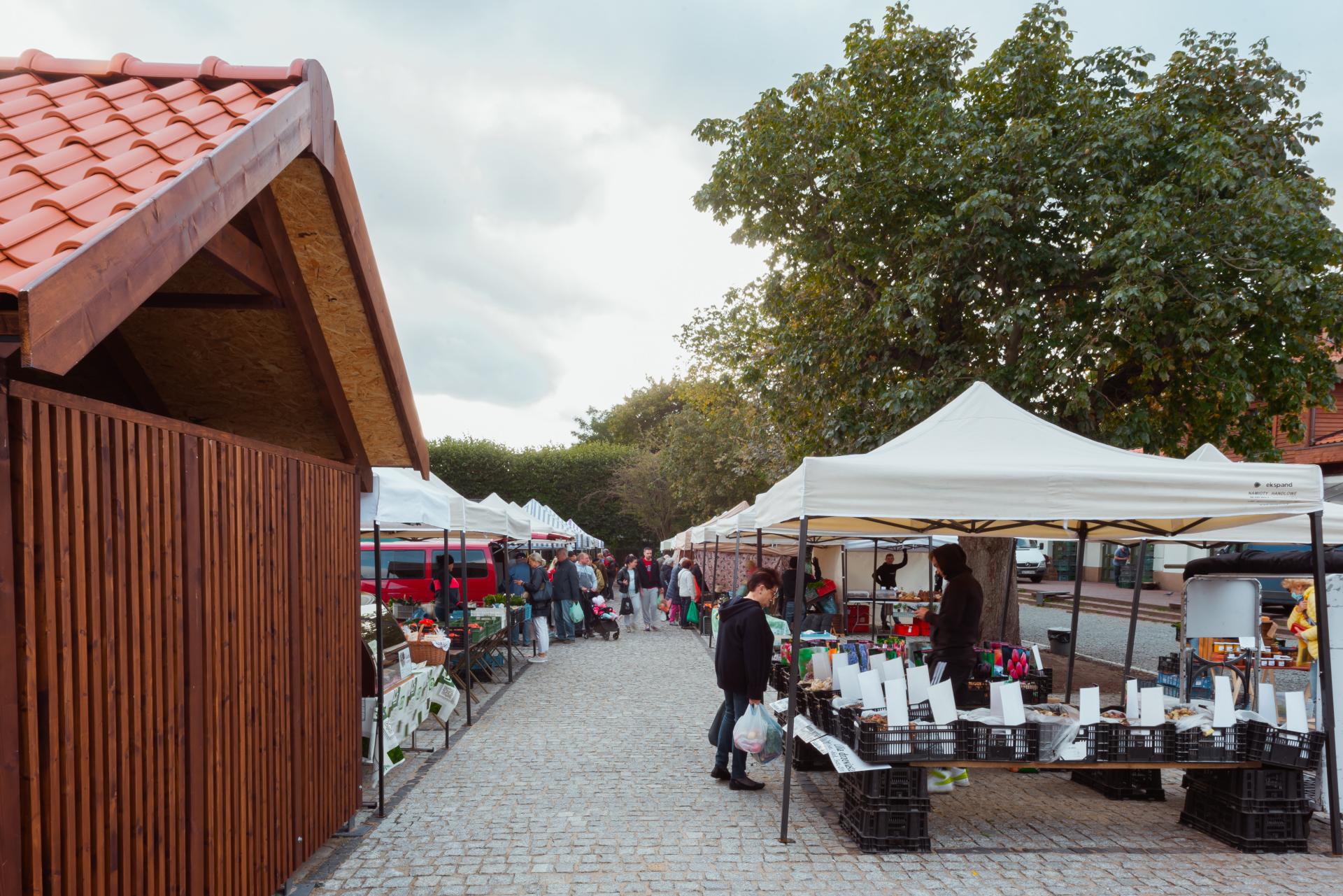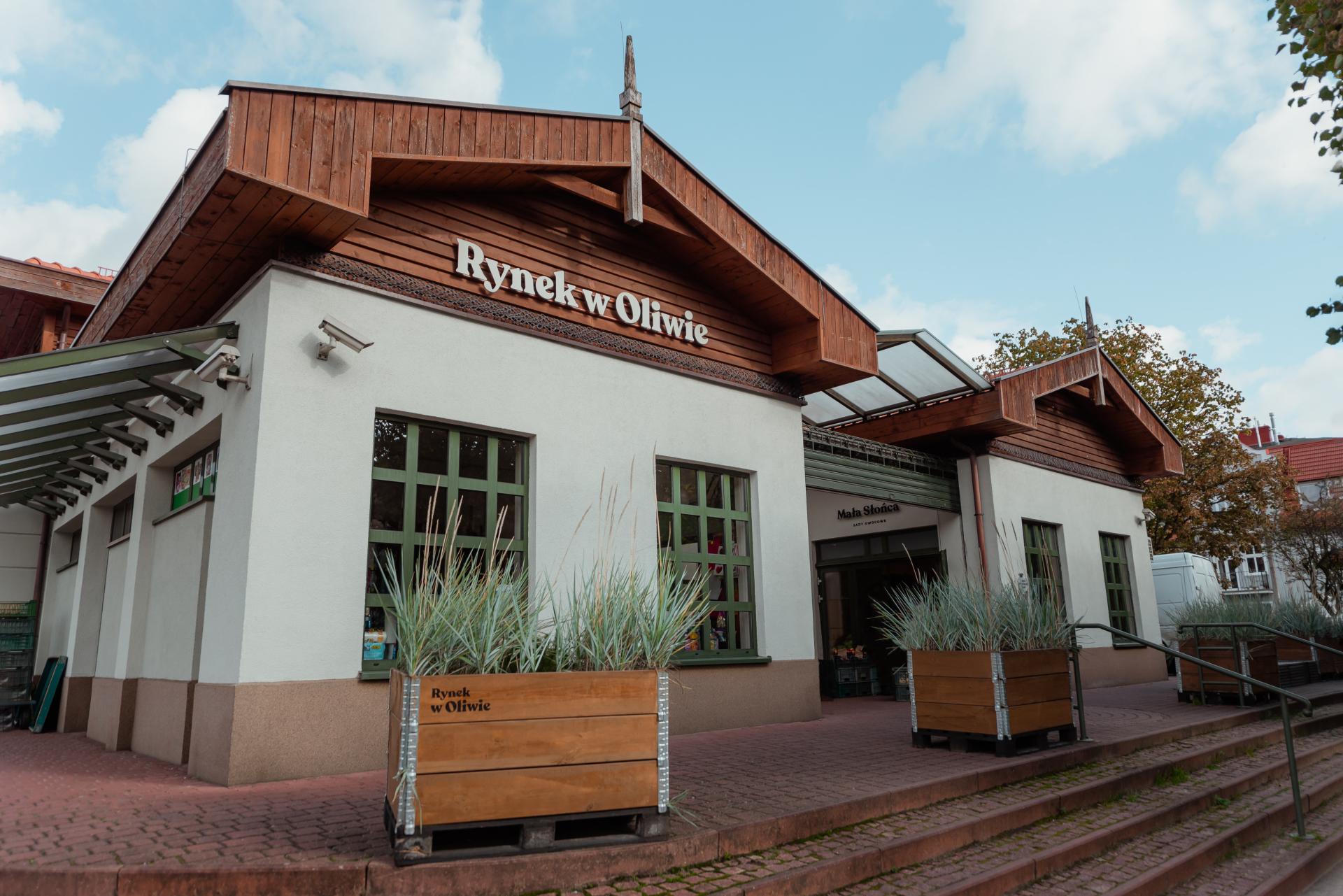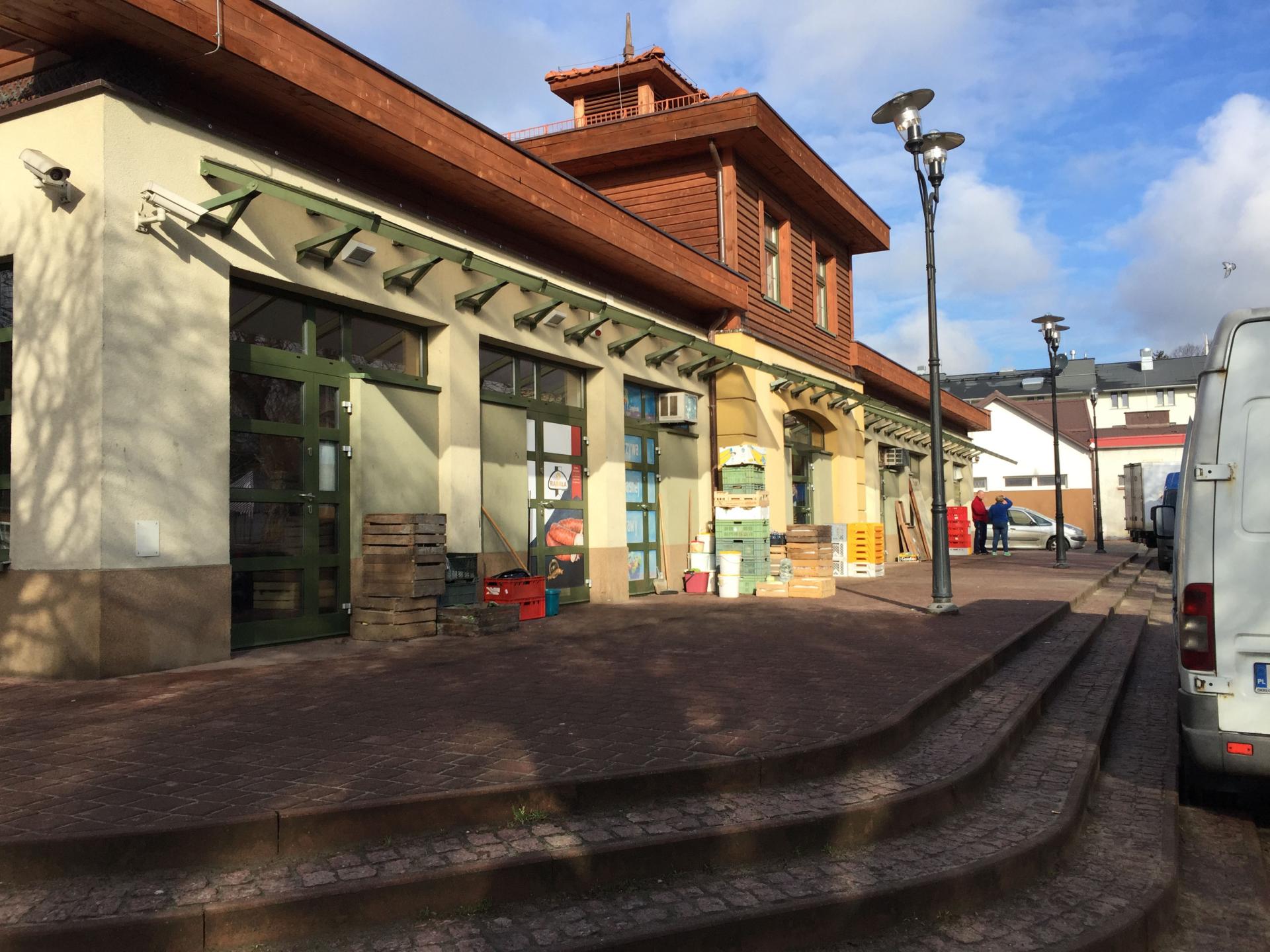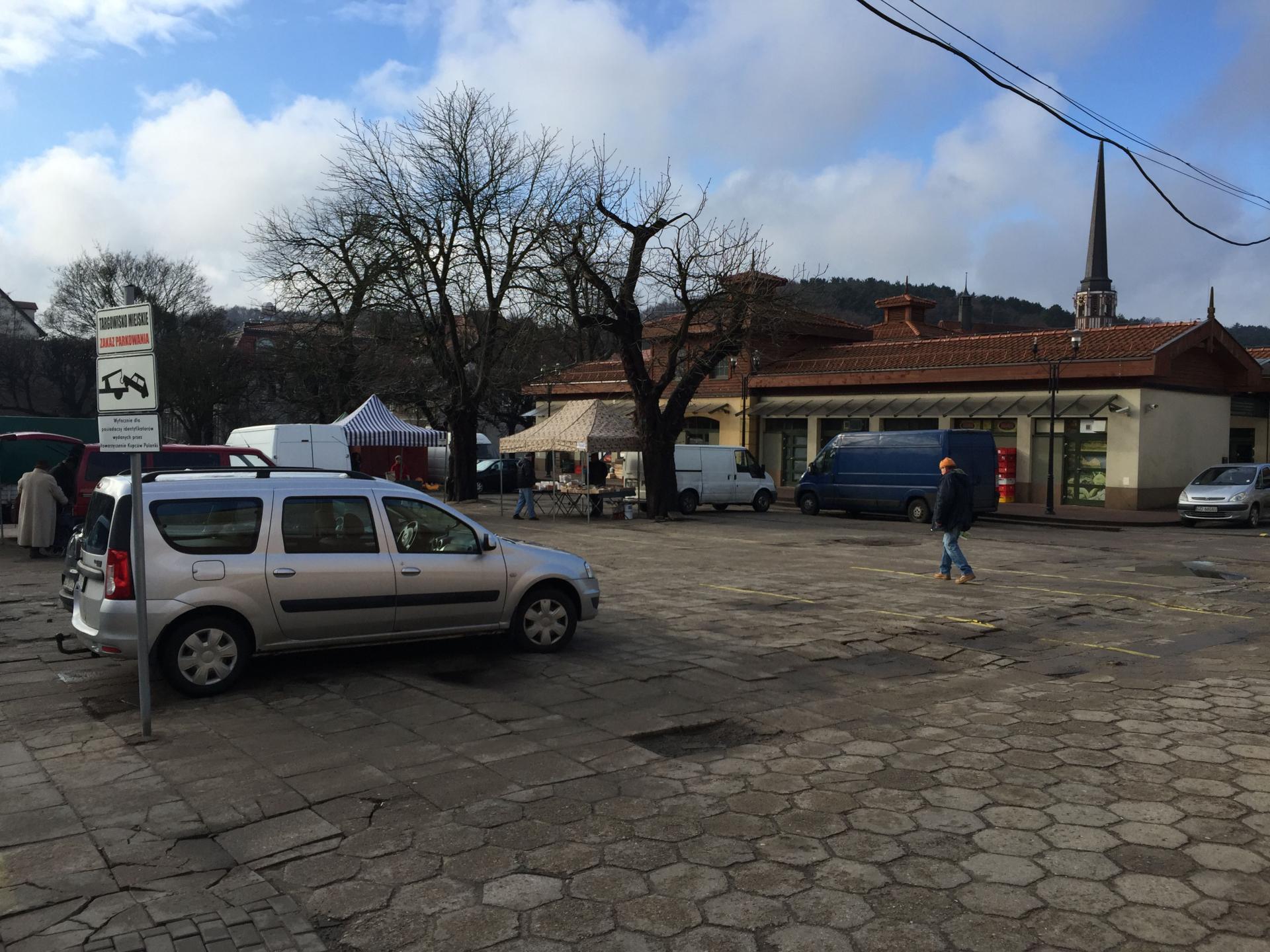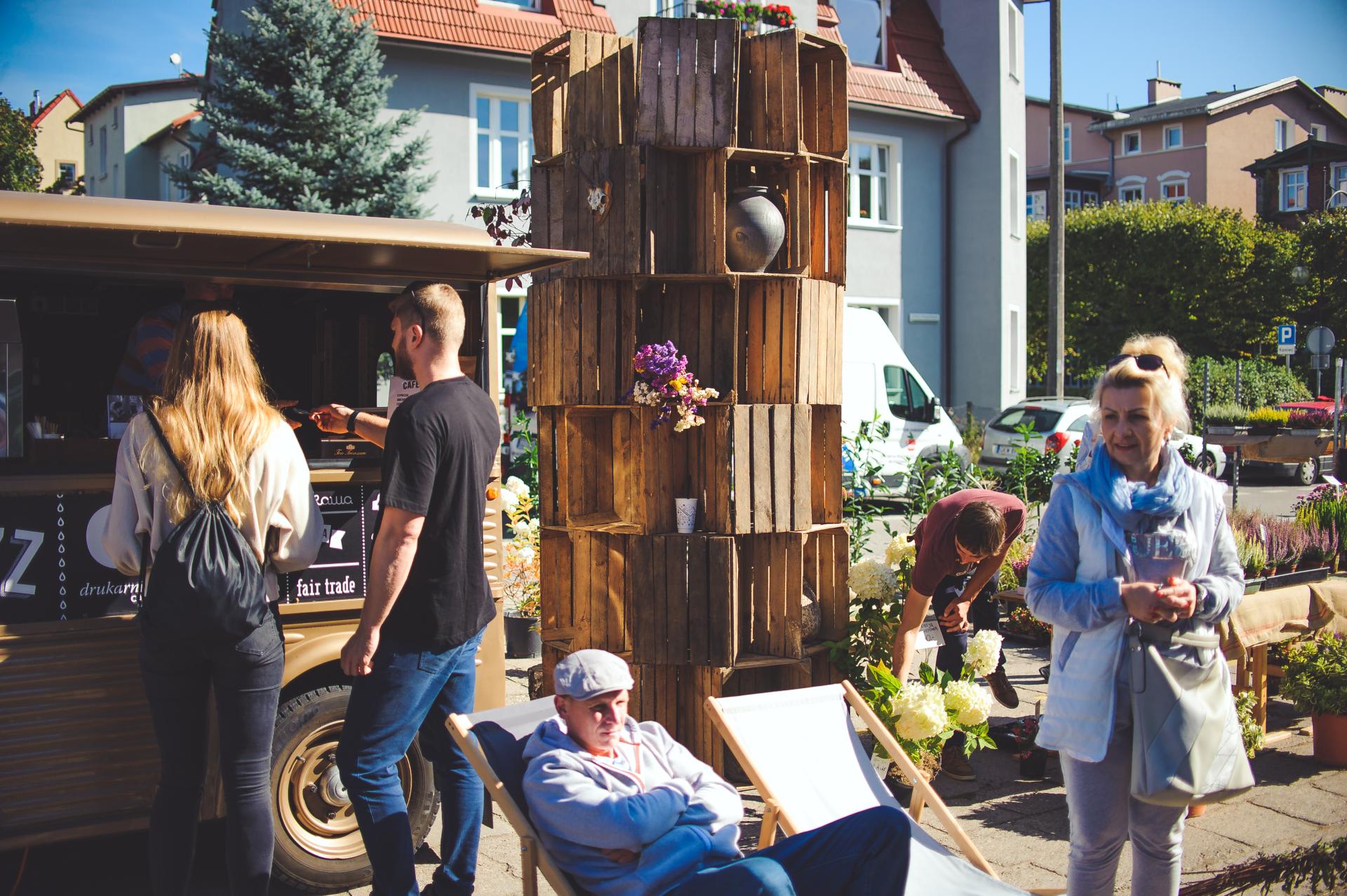Rynek w Oliwie a market & public space
Basic information
Project Title
Full project title
Category
Project Description
Public markets are vital elements of cities, they are multifunctional public spaces that not only provide access to fresh produce, but also strengthen local economies, social cohesion and contribute to community building. Regeneration of declining markets requires a holistic approach that includes planning, design, management and community participation. This project served as a pilot for the strategy of regeneration of urban markets in Poland which is currently being drafted.
Geographical Scope
Project Region
Urban or rural issues
Physical or other transformations
EU Programme or fund
Which funds
Description of the project
Summary
The project aimed at verifying the assumption that regeneration of public markets requires an integrated approach combining spatial, social, economic, communication & marketing activities while ensuring community participation at every stage. The project was implemented in two phases at the Polanki Marketplace, known as Rynek w Oliwie, located in Gdańsk, Poland. The first phase consisted of desktop research & study visits to the Polanki Marketplace which included interviews, urban analysis, workshops and economic analysis. Based on the collected material an organizational development program, a socio-cultural and a spatial program for the regeneration of the selected marketplace were drafted. In the second phase, the pilot programs were implemented and their impact on the economic and social condition of the marketplace were monitored. Overall, the undertaken actions including renovation of the existing paving, painting of the market hall and creating a new layout for the vendors led to a significant improvement of the quality of the space and aesthetics of the market. The implementation of the socio-cultural program consisting of additional thematic events led to the revival of the area as a public space. Creating a new brand identity helped to promote the marketplace as a place for buying fresh produce and meeting. The project proved that promotional activities as well as organizational support of market places in the recruitment of new vendors and clients are crucial in order to mitigate the aging demographics of marketplaces. Another finding was, that improving the overall aesthetics of marketplaces doesn't have to involve large financial input. Small actions such as cleaning the facility of unattractive advertisements or introducing cohesive visual identification may suffice to change their perception.
Key objectives for sustainability
The project implementation is at the centre of sustainable development issues. The aim was to regenerate a deciling market with as little intervention from outisde as possible. The scope of hard investments covered builiding dump compartment and replacement of the damaged square floor with small rain gardens in it as well as wooden crates with vegetation blocking the access of cars. Replacing floor was an opportunity to change the non-optimal layout of the marketplace, which allowed efficient use of space. In addition, identifying elements such as a totem made by artists from the Academy of Fine Arts were placed on the site and a comprehensive change of the visual identification system was implemented.
Most important part of the project was working with community - traders, clients and inhabitants to program new functions on market and ensure more sustainable way of operation - introducing new farmers as well as organisation of new fairs: plant fair, vintage market with pre-used clothes and accessories and flea market with used items, old artefacts and artpieces. All of that events were organised in a way allowing normal people to sell their products beside proffesional traders. Important role of the event was also educate community and also change perception of buying pre-used clothing and introduce to the community concept of circular economy.
The implementation of the project allowed to identify 4 complementary actions that should be taken as part of the market regeneration program. They include:
1. Organizational support in conducting activities reviving the space of marketplaces.
2.Organizational support of marketplaces in the field of recruitment of traders at city markets.
3.Support market operators in the field of spatial transformations, in order to create an inclusive exhibition space that also serves as a public green square.
4.Promotion of markets in the city as a space for sustainable consumption and circular economy
Key objectives for aesthetics and quality
Idea of the project was to redesign existing lot of market square with as little hard investment as possible. The effort was put instead on improving image of the market while maintaing its local genius loci. To acomplish that new visual identification was made. First step was to actually name the place, because it had no previous name and sign. Visual identification programm also included creating social media site of the market.
To improve perception of the market lot of greenery was introduced in the form of small rain gardens securing rain water and wooden crates that function also as a blockade for the cars.
Important part of the project was preperation phase that included space prototyping. New layout of the market was painted and build from scratch and then tested by users to check its functionality and also allowing local traders to get familiar with change.
Key objectives for inclusion
Architectural, artistic, marketing intervention and optimization of organizational and administrative structures were carried out with strict on-going participation with local community. Activities related to the implementation of the pilot project assumed social participation, close cooperation with local economic operators at all stages of the project. Every aspect related to the social structure of the district and demographic trends were taken into account. The project supports micro-entrepreneurship of inhabitants. The conclusions of the project are included in the strategy, which has an important goal of improving the accessibility of space for people with disabilities, the elderly and supporting local government authorities.
Main conclusion of the project is to ensure demographic safety of local markets communities, which are getting older. To do that we need to attract young generation to local markets in the role of clients but most importantly in the role of traders, that choose to work on local market as a profession.
Results in relation to category
The result of the pilot project is to strengthen the socio-economic position of the degraded commercial facility and the economic entities whose activities are related to this facility. At the same time, the research team monitored the economic results of selected business entities and changes in the way the space functions resulting from the implementation. The pilot implementation project was developed on the basis of preparatory research including: urban, sociological, economic, image, functional and market research analyses. As part of the project, the research team wanted to prove the following hypothesis: socio-economic activation is possible and effective by enriching the cultural offer, transforming the program concept and improving the aesthetic condition of revitalized objects in cooperation with local business entities. In addition to the necessary preparatory studies, pilot implementation and monitoring of the resulting socio-economic results were carried out.
The effects of the pilot period were checked. Economic analyses of selected business entities showed that the actions taken had a positive impact on their financial results (an increase of 30% in total of all revenues). Some of the activities carried out, in particular the so-called Night Flea Market, attracted many times more users in relation to the base value understood as an ordinary market day. For example, a record-breaking event attracted as many as 730% more users, while thematic events enjoyed an average of 50% more interest from users compared to the base value. Current activity at the market on the market day (Saturday) increased by 24%.
Result of the project is a basis for creating Market Regeneration Strategy to be used in other sites.
How Citizens benefit
The process of improving the functioning of the marketplace was a comprehensive, bottom-up action. It was based on the change implemented independently by the market manager and merchants with the support of an NGO conducting the process of change. The aim was to introduce new life and activity into the market.
ts-customers and merchants were involved in the process. The most important thing was to reach the main participants – this group accompanied the implementation of the transformation of space, from early planning of the change to its implementation and acceptance. A very important partner was the market manager (operator/administrator), because this entity was the link between the municipal authorities and the merchants. An equally important partner was the local government.
Work on the implementation also consisted in conducting workshops with merchants and creating a multifunctional public space accessible and user-friendly. In addition to the project of reconstruction of the square, a set of small architecture objects was also designed (including a multifunctional sales box, which after closing becomes a bench, benches, overlays on stairs). Rain gardens were designed to support the drainage of water from the square and the reclamation of the existing historic greenery on the square.
Physical or other transformations
Innovative character
Project aimed to change aproach to market regeneration. The emphasis is put mainly to change the way local markets operate. Hard investment should be seen as a tool in achieving that goal, instead of being goal in itself.
The main goal of the project is to develop and implement a strategy for the regeneration of city markets in Poland. The research allowed to distinguish 7 most important indications and recommendations to take into account in the regeneration process:
Educating residents and officials about the importance of markets for the local community, economy, district and city.
- The issue of the development of marketplaces and the related subject of sustainable consumption should become an element of the urban development strategy
- Without outside intervention, there is a high probability of demographic collapse associated with an ageing merchant community and a lack of generational renewal.
- Repairs and modernizations of the markets are insufficient to revive the market. Therefore, support from external entities is required in the field of market animation,the organization of thematic fairs, and the search for partners and new buyers.
- Currently, the markets are ineffectively managed and uncontrolled, which in effect deprived the municipalities of the ability to react quickly and led to many years of neglect that is difficult to repair. The need to create criteria for assessing the operation of the marketplace was identified. The management of markets should include three aspects: economic, spatial and cultural.
- City markets should be treated as a brand and become one of the tools for shaping the image of the city and the sense of local identity.
- City markets should be treated as an integral part of the system of public spaces.
Learning transferred to other parties
The potential of transferring the projects' results and learnings to other interested parties and other contexts is large. The pilot project was realised as a part of a research and implementation project called Strategia rewitalizacji obiektów handlu targowego z wykorzystaniem metody społecznego katalizatora przedsiębiorczości, repozycjonowania marki oraz placemakingu jako narzędzie polityki rozwoju lokalnego [Strategy of revitalization of market facilities with the use of social entrepreneurship, brand repositioning and placemaking as a tool for development of local policy], financed by the National Centre for Research and Development in Poland - through the GOSPOSTRATEG program. The results of the pilot described in this application will serve as the backbone of the strategy and toolkit for regeneration of urban markets in Poland which is currently being developed. The applicants will organise in total six seminars during which the findings of the pilot project will be shared with operators of marketplaces in Polish cities, NGOs concerned with urban planning and local authorities. In addition, two conferences that will serve dissemination of project’s results and learnings will be organised - one at the Polytechnique of Gdańsk on the 6th of May and the second at the Academy of Fine Arts in Gdańsk on the 13th of May. As beneficiaries of the GOSPOSTRATEG program the applicants are obliged to carry out 5 additional implementations concerned with various aspects of market regeneration. This will not only allow to transfer the project’s results to other contexts, but also to verify them. The project has also been widely communicated during its duration and information about its outcomes have been shared in social and national media through interviews and articles, which has generated interested from potential stakeholders.

